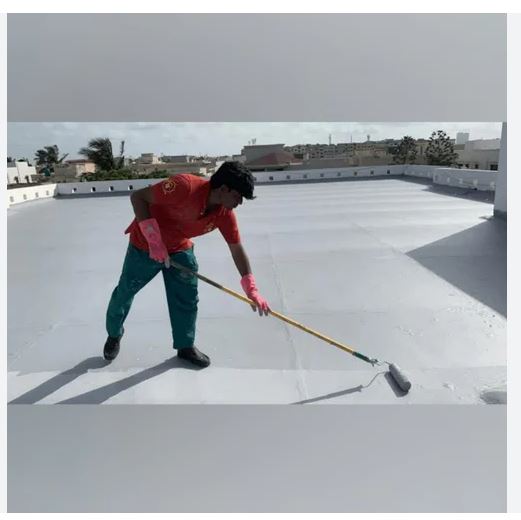Waterproofing plays a crucial role in protecting structures from water damage, ensuring their longevity and structural integrity. With numerous waterproofing methods available, it can be challenging to determine which one is most suitable for your project. In this comprehensive guide, we will compare cementitious waterproofing with other common waterproofing methods, offering valuable insights into their differences, benefits, and considerations. By understanding the strengths and weaknesses of each technique, you can make an informed decision to achieve the most effective and long-lasting waterproofing solution for your construction projects.
Cementitious Waterproofing:
Cementitious waterproofing is a popular method that utilizes a cement-based mixture to create a protective barrier against water infiltration. This technique is commonly used in areas such as basements, foundations, concrete walls, and roofs. The mixture comprises cement, aggregates, and additives that enhance its waterproofing capabilities. Once cured, the cementitious waterproofing system forms a durable and seamless membrane, effectively preventing water penetration. One notable advantage of cementitious waterproofing is its ability to withstand hydrostatic pressure, making it highly suitable for below-grade applications. Additionally, cementitious waterproofing systems are versatile, as they can be applied to various substrates, including concrete, masonry, and wood.
Liquid Applied Membrane:
Liquid-applied membranes (LAM) are another popular choice for waterproofing. These liquid systems are typically composed of polymer-based materials, such as polyurethane or acrylic, that are applied as a Polyurea Coating or sprayed onto the surface. LAM offers excellent flexibility and can be applied on both horizontal and vertical surfaces. It forms a seamless and elastic membrane that expands and contracts with temperature changes and structural movements. This characteristic makes LAM particularly suitable for areas prone to cracking or movement, such as balconies or rooftops. However, LAM may not provide the same level of durability as cementitious waterproofing in areas with high hydrostatic pressure.
Bituminous Membrane:
Bituminous membranes, also known as asphaltic membranes, have been widely used for waterproofing applications for many years. These systems are constructed using a bitumen-based material, typically reinforced with materials like fiberglass or polyester. Bituminous membranes offer excellent resistance to water, as well as ultraviolet (UV) degradation. They are commonly used in roofing and underground applications due to their durability and ability to withstand extreme weather conditions. However, bituminous membranes can be susceptible to aging and require regular maintenance to prevent cracking and deterioration. The installation process can also be more complex compared to other methods.
Bentonite Waterproofing:
Bentonite waterproofing is a unique waterproofing method that utilizes bentonite clay as the primary material. Bentonite is a natural, expandable clay that swells when it comes into contact with water, forming a gel-like substance. This characteristic enables it to create an impermeable barrier against water infiltration. Bentonite waterproofing systems are often installed as sheets or panels, typically sandwiched between geotextile layers. This method is commonly used for below-grade applications and can offer excellent protection, especially in areas with fluctuating water levels. However, proper installation techniques are crucial to ensure the effectiveness of bentonite waterproofing, and it may not be as versatile as other methods in terms of its application range.
Polyurethane Injection:
Polyurethane injection is a specialized waterproofing technique that focuses on repairing existing cracks or voids in structures. It involves injecting a liquid polyurethane resin into the cracks, which expands and fills the voids, creating a watertight seal. Polyurethane injection is commonly used when dealing with leaking basements, foundation cracks, or damaged concrete structures. This method provides a cost-effective solution for repairing specific areas of water ingress, but it may not be suitable for large-scale waterproofing applications. It is important to note that polyurethane injection is primarily a remedial measure and may not be as effective as a standalone waterproofing system for preventing future water intrusion.
Comparison Factors:
Consider the following factors when comparing cementitious waterproofing with other waterproofing methods:
Durability: Cementitious waterproofing is known for its excellent durability, especially in areas with high hydrostatic pressure. It provides a long-lasting, seamless membrane that resists water penetration. However, other methods such as bituminous membranes and LAM can also offer good durability depending on the specific product and application.
Crack Bridging: Liquid-applied membranes and polyurethane injection systems are known for their crack-bridging capabilities. These techniques can accommodate minor movements in the substrate without compromising waterproofing performance. Cementitious waterproofing can handle minor cracks to some extent, but it may not be as flexible as LAM or polyurethane injection in this aspect.
Application Range: While cementitious waterproofing can be applied to various substrates, including concrete, masonry, and wood, each method has specific guidelines and limitations. For example, bituminous membranes are commonly used in roofing applications, while bentonite waterproofing is often utilized below grade. Understanding the application range of each method is essential to ensure effective and appropriate waterproofing for a specific project.
Cost-effectiveness: The cost-effectiveness of waterproofing methods can vary depending on factors such as material costs, installation complexity, and longevity. Cementitious waterproofing is generally considered a cost-effective option, especially for below-grade applications. However, the overall cost-effectiveness will also depend on the specific project requirements and the expertise required for installation.
Maintenance: Regular maintenance is crucial for the longevity and effectiveness of any waterproofing system. Cementitious waterproofing typically requires minimal maintenance, making it a favorable choice for long-term cost savings. On the other hand, systems like bituminous membranes may require periodic inspections and maintenance to prevent cracking and degradation.
Conclusion:
Choosing the right waterproofing method is essential to ensure the long-lasting protection and durability of your structures. Cementitious waterproofing offers distinct advantages in terms of its durability, versatility, and cost-effectiveness. However, other methods such as liquid applied membranes, bituminous membranes, bentonite waterproofing, and polyurethane injection have their own unique benefits and considerations. By understanding the strengths and weaknesses of each technique and considering factors such as durability, crack bridging capabilities, application range, cost-effectiveness, and maintenance requirements, you can make an informed decision about the most suitable waterproofing method for your construction projects. Remember to consult with professionals and consider the specific project requirements before making a final choice.



